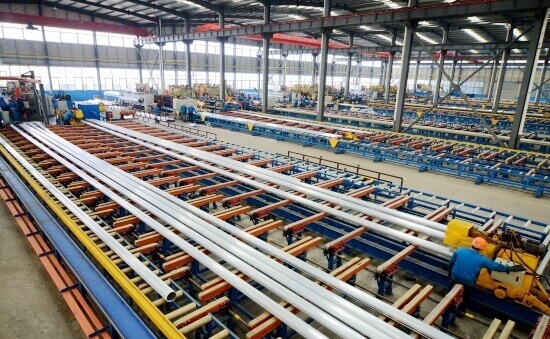Views: 352 Author: Site Editor Publish Time: 2020-02-14 Origin: Site
As we all know, the aluminum extrusion process is one of the most widespread techniques. However, many people may not fully understand it. Don't worry! This article can help you to figure it out.
Simply put, aluminum extrusion is the process of pressing a heated aluminum billet through a die with a ram. The die is pre-designed with a specific cross-sectional profile. Thus, it can directly affect the shape and surface quality of extrusions.
As a matter of fact, it is similar to squeezing toothpaste. Although the billet does not like paste or liquid, rather a malleable solid during extrusion. The pressure can regard as the force you apply to squeeze toothpaste with your fingers. And the extrusion die has the same shaping function as the tube's opening.
Direct extrusion is also known as forward extrusion. The moving ram pushes the billet through a fixed die in the container. It is the most common extrusion methods to produce a wide range of solid or hollow extrusions.
Indirect extrusion, namely backward extrusion, can keep friction to a minimum. The billet is stationary while the ram pushes the die into the extruder container. Besides, this method allows larger billet to pass and increases production speed.

Calm: Felt Roller, Galvanized Iron Roller, Spacer Sleeve, Felt Pad, Nomex Felt Strip
Firstly, cut the billet to the desired length according to the final specifications.
Preheat the billet as well as extrusion die to 425-500℃.
It is necessary to carry out preheating treatment. Because it can turn the billet into a soft solid instead of molten to the malleable capacity. In the same way, the preheating of the die can not be ignored as well. A preheated die ensures even metal flow and extends its service life.
Apply lubricant or parting agent to the billet and ram, which can prevent sticking together to reduce waste.
With the ram moves forward, the billet enters into the container of the extruder.
Due to the pressure, the billet expands and fills in the container walls. (The ram exerts pressure ranges from 100T to 15,000T.)
In the container, the billet has nowhere to go except the die opening. As a result, the extrusions come out with the same shape as the opening.
After extrusion, the profiles pass the initial table, run-out table, and cooling table in turn.
The extrusions stay in the cooling table until reaching room temperature. There are many ways to cool, such as through air, water bath, fans.
The stretcher table can correct twists and straighten extrusions to a line.
In the saw table, the profiles are cut to specific lengths as customer requirements.
Finally, heat the extrusions into the aging furnace at about 200℃ for at least 4 hours. The purpose of aging is to harden and reach the best mechanical properties.
Although the aluminum extrusion process features high productivity, it doesn't mean high product yield. There is also a risk of damage to the smooth surface during stacking, storage and transport, which can affect sales.
Calm is a reliable supplier of industrial felts with over 18 years of experience. Our heat resistant felt products are of high quality that can provide better protection for the profile. Please feel free to contact us at any time if you search for more information!